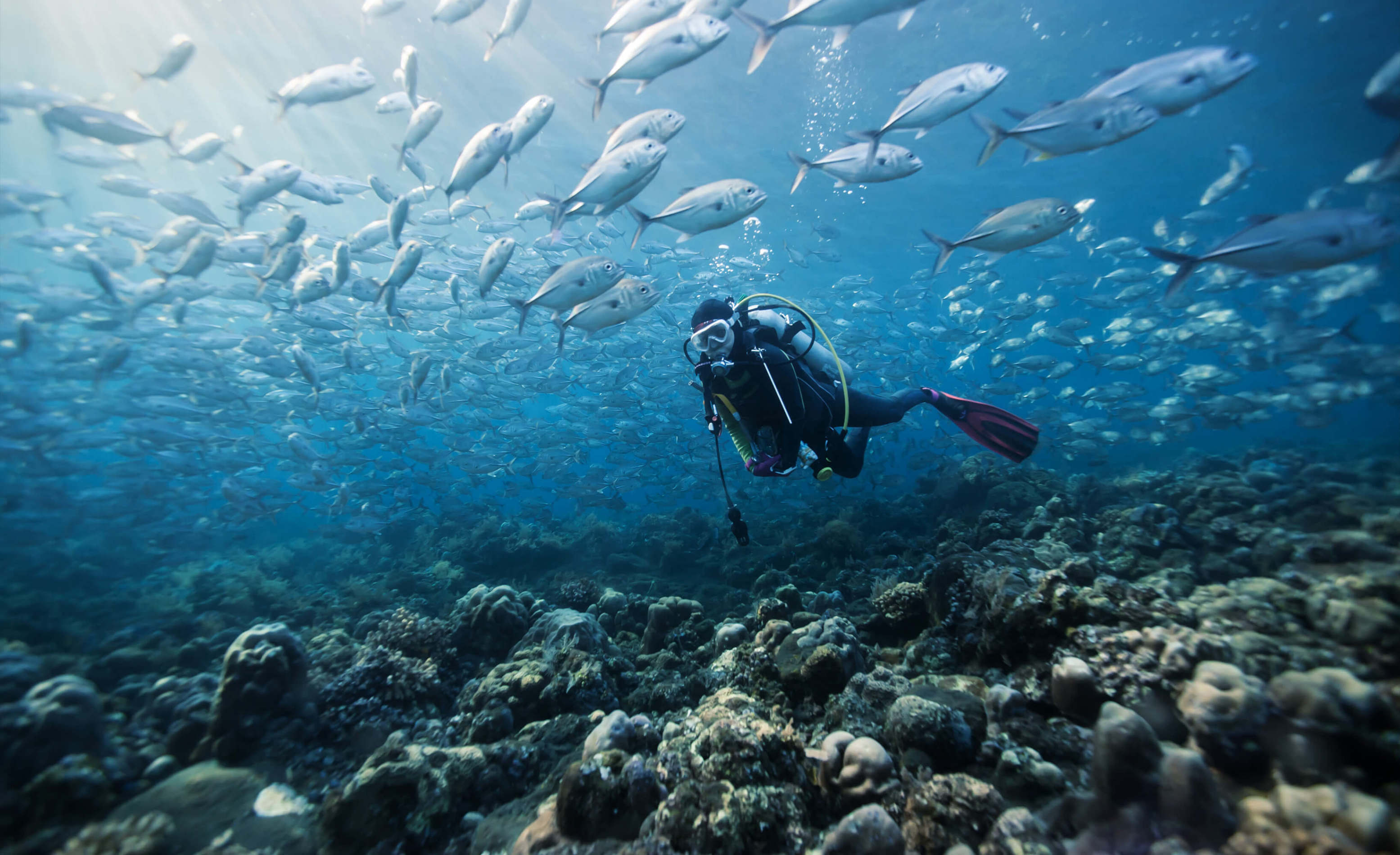
Strengthen Florida Keys National Marine Sanctuary
Goal: The only barrier coral reef in the continental United States is managed with the strongest environmental protections and conservation measures, driven by science and incorporating robust public participation, input, and support from local stakeholders and recreational sanctuary users.
Established in 1990, Florida Keys National Marine Sanctuary protects the only barrier coral reef in the continental United States, stretching south from Miami to the Dry Tortugas. Within these waters lie nationally-significant resources including seagrass beds, coral reef colonies, mangrove-fringed islands, and thousands of marine species. This fragile habitat supports lifeways and livelihoods of the residents of the Florida Keys and is increasingly under threat from hurricanes, disease, boat groundings, climate change, pollution, and human interactions.
In an effort to address these threats, the sanctuary is proposing a 'Restoration Blueprint' that embodies 30 years of cutting-edge science, technical experience, and local community involvement.
Surfrider broadly supports Marine Protected Areas (learn more about MPA here) as tools for ocean protection and restoration. Surfrider staff worked closely with the Florida Keys Chapter and local stakeholders to provide comments to NOAA supporting water quality restoration, inclusion of climate considerations, and expanding the sanctuary boundary to include critical marine habitat areas like Pulley's Ridge in response to the Draft Environmental Impact Statement released in 2019.
In July 2022, the Sanctuary released the next iteration of the Restoration Blueprint, the proposed rule and draft management plan, followed by a rigorous 100 day public comment period that ended on October 26, 2022. Surfrider staff worked closely with its Florida Keys Chapter, local stakeholders, and regional conservation partners to amplify the importance of conservation measures in the Sanctuary throughout the comment period.
Staff and chapter members participated in five public meetings, facilitated action and comments from more than 1,500 Surfrider members and supporters, and submitted a detailed comment letter outlining Surfrider's support for important conservation measures, including water quality and the proposed cruise ship discharge prohibition, sanctuary boundary expansion, additional protection for nearshore habitats, and mandatory boater education.
After the comment period closed, Surfrider staff and its Florida Keys Chapter continued to engage with Sanctuary leadership and coalition partners to urge for the expeditious completion and publication of the final rule, management plan, and environmental impact statement. In December 2024, NOAA released the final environmental impact statement and management plan, containing a range of important actions that will help protect the fragile resources of the Florida Keys in light of increasing climate impacts.
The publication of the final rule for Florida Keys National Marine Sanctuary in January 2025 started a review period for Florida Governor Ron DeSantis and Congress. The governor will assess the regulations and either accept them in whole, reject them in whole, or line-item veto parts that fall within state waters. Throughout the review period, Surfrider will continue to urge approval of the final rule and look forward to engaging with NOAA and Sanctuary staff to ensure implementation. The future of Florida Keys National Marine Sanctuary depends on it!
